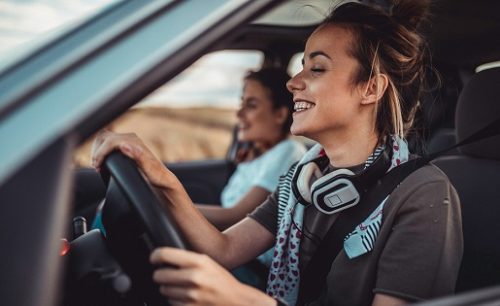The Real Danger on Roads: Distracted Driving
Contrary to the claims of some government agencies and safety ‘experts’ that speed is the biggest danger on roads, driver distraction is actually the more significant threat. According to a survey conducted by Travelers Insurance, many Americans admit to engaging in risky behaviors while driving, with cell phone use being the biggest distraction.
The survey, which polled 1,851 adults nationwide, found that 53.7% of respondents admitted to using their cell phones while driving or engaging in other risky behaviors such as speeding or driving while intoxicated. Sixty percent of those who acknowledged risky behavior said they had talked on the phone while driving, while more than 1 in 4 admitted to texting.

Adam Snider, director of communications for the Governors Highway Safety Association, defines distraction as “anything that takes your eyes off the road, your hands off the wheel, and your mind off driving.” The consequences of distracted driving can be severe, with a single ticket for speeding or DUI potentially raising insurance premiums by hundreds of dollars.
The Dangers of Mobile Phone Use
Mobile phones are so ubiquitous that many people don’t think about when or where they’re using them. However, talking while driving can be a significant distraction, even if it’s done hands-free. The survey found that 60.7% of respondents who admitted to risky driving behavior said they had spoken on the phone while driving. Moreover, 41.3% said they had used an app while driving, which can also be dangerous as it takes focus away from the road.
Joe Young, media relations director for the Insurance Institute for Highway Safety (IIHS), notes that “distracted driving doesn’t always clearly present itself, and in many instances when there’s a crash, the driver won’t admit to it.” Penalties for distracted driving vary by state, with fines, civil penalties, and points on licenses being common consequences.
Texting and Driving: A Perilous Combination
Texting while driving is particularly hazardous, as it can blind drivers for several crucial seconds. According to the National Highway Traffic Safety Administration (NHTSA), a mere 5 seconds spent texting while driving at 55 mph equates to covering the length of a football field blindfolded. The survey found that 28.7% of drivers who admitted to distracted driving said they had texted while driving.
Other Forms of Distracted Driving
Watching videos while driving is another form of distraction, with 10.9% of respondents admitting to doing so. Although not illegal in all states, this behavior is considered “horribly selfish and unsafe” by Snider. Impaired driving, whether due to alcohol or marijuana, is also a significant threat to public safety, with 32% of all traffic crash fatalities in the US involving drunk drivers.
The survey’s findings highlight the need for continued education and awareness about the dangers of distracted driving. As the insurance industry moves towards more nuanced assessments of driver behavior, using data from USB telematics and phone apps, it’s clear that addressing distracted driving will be crucial in reducing accidents and insurance claims.


